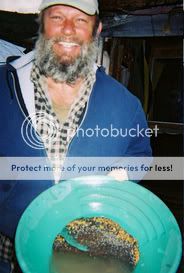Very good point.
What is an operational cost;
The system has to be UP sized so the wash plant is able to keep up with the loaders. Fabricating a LARGER wash plant has a cost. It isn't an "operational cost". By design, I have specified that the wash plant NOT have any moving parts. That is in order to reduce the COST of maintenance and DOWN TIME due to failures. The cost of UP SIZING goes under capital costs and get amortized over time. I simply take a chunk of the revenue and use that to pay for the materials or give MYSELF a loan!
Note: Increasing the number of cubic yards requires a proportionately larger pump capacity. I abide by the 15 percent slurry rule.
Hang on, there's more!
- Geowizard


